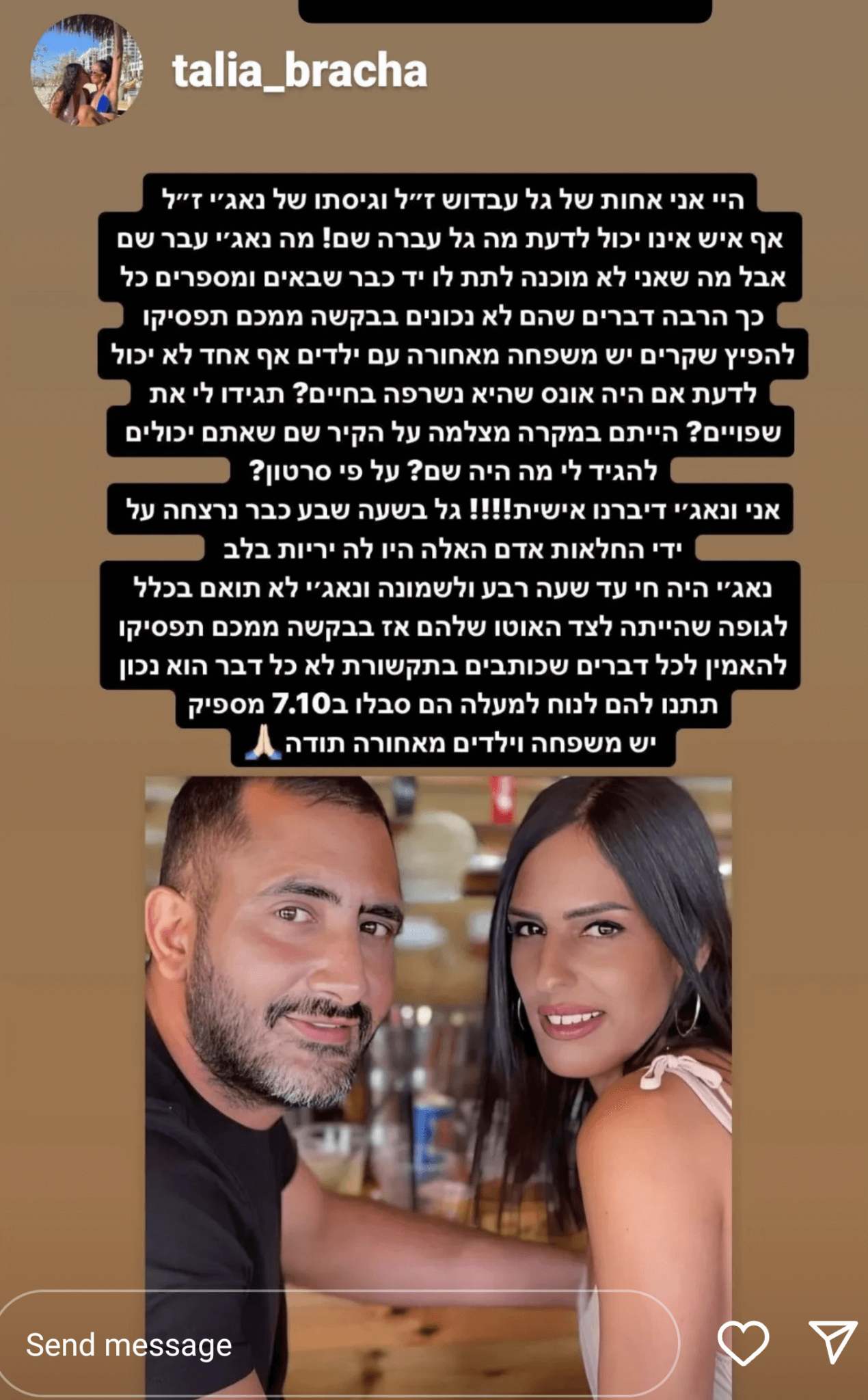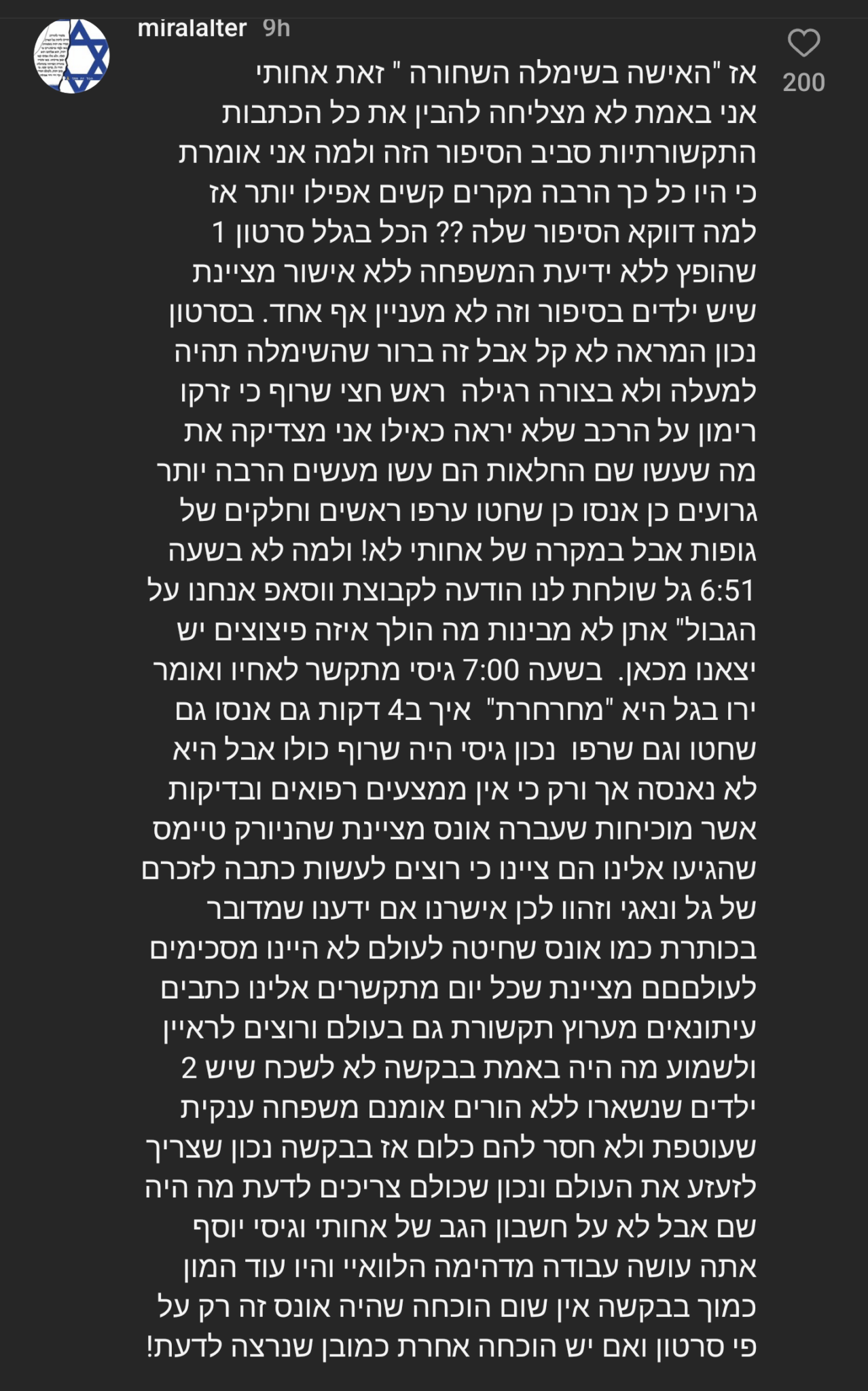The October 7th Tragedy: Complexities and Controversies in Israel
On October 7, a devastating attack in Israel marked the most severe since the 1948 occupation of Palestine.
Initially, Israeli officials reported 1,400 fatalities, but this figure was later corrected to 1,139,
comprising 694 civilians, including 36 children, 373 security forces, and 71 foreigners. Israel says these
people were killed by Hamas fighters.
Survivor accounts from October 7, however, paint a more complex picture. Some suggest that in their
determination to defeat Hamas Israeli military commanders made decisions that resulted in Israeli soldiers
and civilians being caught in the crossfire.
To garner international support, the Israeli government portrayed a particularly horrific incident as a
consequence of "Hamas brutality." In this narrative, Hamas fighters were accused of killing 12-year-old Liel
Hetzroni, her twin brother Yanai, their grandfather Avia, and aunt Atala, along with other hostages, before
setting the building ablaze.
Subsequent eyewitness testimonies contradicted this account. They pointed to an Israeli tank as the source
of the tragedy. Tuval Escapa, a security team member from Kibbutz Be'eri,
acknowledged
to Haaretz that it was an Israeli tank that caused the deaths. He shared with the newspaper that commanders
made tough calls,
including the shelling of houses with residents inside, to eliminate Hamas and hostages together. Haaretz
also reported that Israeli commanders felt compelled to order an airstrike on their own facility at the Erez
Crossing to Gaza to counter the Hamas soldiers who had seized control. This facility was staffed with
officers and soldiers from the Israeli Civil Administration.
Further
Haaretz
reports highlighted the challenges faced by the army in Be'eri, including shelling
residential areas, which resulted in at least 112 local fatalities. Apache helicopter pilots struggled to
differentiate between civilians and Hamas fighters, yet they proceeded to engage in combat.
Hannibal Protocol
In the aftermath, Haaretz and families of those killed by Israeli Occupation Forces (IOF) tanks have strongly called for an inquiry into the military's actions. This demand is rooted in the controversy surrounding the IOF's Hannibal Protocol. The protocol, established in 1986 and named after the Carthaginian general who chose death over capture by the Romans, prioritizes preventing kidnappings, even at the risk of harming Israeli citizens. Following the capture of two Israeli soldiers by Hezbollah, the Hannibal Directive was implemented to deter the capture of Israeli troops using maximum force, accepting the potential loss of captured soldiers and civilians in the process. The surprise attack of Hamas on October 7th on Israel has been surrounded by complexity and confusion. Amidst these developments, there has been a rush to judgment by various media outlets, often portraying a narrative skewed against the Palestinian side. This rapid dissemination of information, not always substantiated, has led to widespread misinformation, notably regarding the tragic circumstances affecting civilians.
The Gal Abdush Case and the Challenges of Reporting Conflict-Related Sexual Violences
One such instance involved the Israeli government's website, which has been accused of spreading misleading
information. This misleading information includes beheading babies, torturing, burning alive, and raping.
In a particular case reported by
The New York Times
, a video depicted a woman in a black dress. She can be
seen lying on her back with her dress torn, her legs spread, and her vagina exposed. Later was she
identified as Gal Abdush. Ms. Abdush, a mother from a central town in the occupied Palestinian territories,
was initially portrayed as a victim of sexual assault. This narrative was later questioned by her own
family, leading to a significant controversy.
The
mother said,
of the victim expressed her shock, saying, “We didn’t know about the rape at all. We only knew
after a New York Times journalist contacted us. They said they matched evidence and concluded that she had
been sexually assaulted.” In contrast, Abdush, the brother-in-law, firmly denied these claims, stating, “the
media invented it.”
Similarly, the victim's sisters voiced their doubts about the allegations. Tali Barakhan took to Instagram
to express her frustration, “No one can know what [the victim] went through there! Also,
what Nagi went through, but I can’t cooperate with those who say many things that are not true. I plead with
you to stop spreading lies, there is a family and children behind them, and no one can know if there was
rape or if she was burned while alive. Have you gone mad? I spoke to Nagi personally! At 7 o’clock, [the
victim] was killed by those animals, and they shot her in the heart. Nagi was alive until quarter past
eight…”

Miral Altar, another sister of the victim, also shared her perspective on social media. In a comment on
Instagram responding to a video
from a hasbara account, Altar wrote,
“I can’t understand all these reports.
There were many difficult stories, why this story in particular? It’s based on only one video published
without the family’s knowledge… It is true that the scenes in the video are not easy, but it’s clear that
the dress is lifted upwards and not in its natural state, and half her head is burned because they threw a
grenade at the car. I don’t want to be understood as if I’m justifying what they did; they are animals, they
raped and beheaded people, but in my sister’s case, this is not true. At 6:51, [the victim] sent us a
message on WhatsApp saying ’we are at the border, and you can’t imagine sounds of explosions around us’. At
7 o’clock, my brother-in-law called his brother and said they shot [the victim] and she’s dying. It doesn’t
make any sense that in four minutes, they raped her, slaughtered her, and burned her?”

Furthermore, on January 1, Nissim Abdush, the brother of Nagi, appeared on Israeli Channel 13 for an
interview. During this 14-minute segment, Nissim consistently refuted the allegations that his sister-in-law
had been raped.
Her sister firmly
refuted
the allegations of rape, criticizing
the New York Times for what she viewed as a manipulative portrayal of her sister. This incident highlights
the complexities and sensitivities in reporting in conflict zones, where the truth is often the first
casualty.
Seeking the Truth Amid Conflict
In recent reports, there have been concerns raised about the difficulties faced by Israeli police in
gathering concrete evidence of sexual violence alleged to have occurred during recent conflicts. This
challenge in evidence collection has been highlighted by women's rights groups in Israel, who stress the
importance of preserving forensic evidence to better understand the extent of such violence.
The Guardian
has reported several incidents of sexual assault and rape allegedly occurring on 7 October,
with claims that Hamas body camera footage, CCTV, social media content, as well as photographs and videos
taken by civilians and first responders provide evidence. However, the availability and clarity of
this footage and photographic evidence remain uncertain, casting a shadow on the verification process.
Propaganda or Proof?
There is also skepticism about the credibility of information provided by the IOF. The IOF has produced a compilation of footage purportedly showing war crimes, but their reliability as a source has been questioned. An incident involving the IOF's interpretation of a calendar, allegedly used to justify bombings on facilities like the Al-Shifa hospital, has been scrutinized. The IDF misrepresented this calendar as a schedule for Hamas activities, a claim that has been contested, especially by Arabic-speaking audiences who challenge the IOF's interpretation of the document.
On the other hand, Palestinians (children too) are sexually abused by the IOF, even way before the surprise attack of Hamas.
